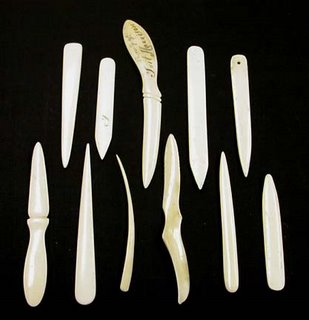
Fore-edge paintings are watercolor decorations, painted on the ends of the pages of the fore-edge of a book. In most cases, a fore-edge painting is only visible when the pages are fanned out.
According to Wikipedia, the earliest fore-edge paintings date possibly as far back as the 10th century and were symbolic designs. The first known example of a disappearing fore-edge painting (where the painting is not visible when the book is closed) dates from 1649. Around 1750 the subject matter of fore-edge paintings changed from simply decorative or heraldic designs to landscapes, portraits, and religious scenes, first in monochrome and then later in full color. In many cases, the chosen depiction related to the subject of the book, but in other cases it did not.
 The technique involved fanning the fore-edge of the text block (the outer edge) and clamping it. Then, a watercolor painting would be executed on the fanned leaves. When dry, the fore-edge would most commonly be gilt, less commonly marbled. thus concealing the existence of the painting until the fore-edge was fanned.
The technique involved fanning the fore-edge of the text block (the outer edge) and clamping it. Then, a watercolor painting would be executed on the fanned leaves. When dry, the fore-edge would most commonly be gilt, less commonly marbled. thus concealing the existence of the painting until the fore-edge was fanned.In addition to the standard painting, sometimes known as a single, there are several variations:
- split … each half of the fore-edge bears a different painting.
- double … shows an illustration when the fore-edge is fanned out the usual way, and a completely different painting when the pages are fanned out in the opposite direction.
- triple ... in addition to paintings on the edges, a third painting is applied directly to the edges (in lieu of gilt or marbling).
- panoramic … the illustration covers not only the fore-edge but the top and bottom edges of the book as well.
 One practitioner, Martin Frost, whose work is pictured here, has produced well over 3000 fore-edge and miniature paintings since 1970. His site has a video of the fanning process. This site has some examples done by students in one of his workshops.
One practitioner, Martin Frost, whose work is pictured here, has produced well over 3000 fore-edge and miniature paintings since 1970. His site has a video of the fanning process. This site has some examples done by students in one of his workshops.






